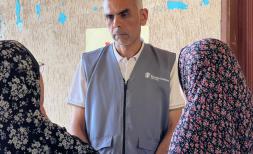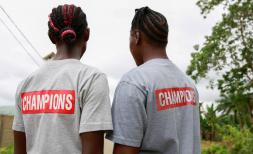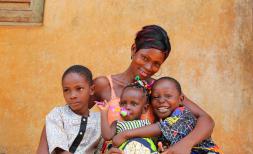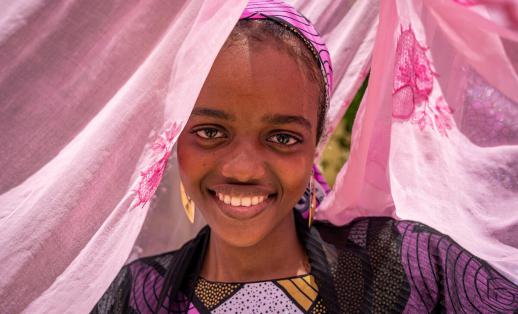Why our voices matter! How Children Can Work Together to Help Eliminate Harmful Practices

“My parents needed me to work and what could I do? We could barely have enough food to eat. I took over the responsibility of caring for the family. [because I was out of school and exposed to sexual gender-based violence in adult settings] ... I got pregnant…” - Kadiatu,* Sierra Leone.
There are dozens of harmful practices that affect children all over the world. But only on the African continent do 76 percent of girls get married before their 18th birthday, 29 percent of all children aged 5 to 17 are forced to work instead of go to school, and female genital mutilation has a prevalence of 98 percent.
We at Save the Children believe children are best placed to speak about what matters most to them, so today, on The Day of the African Child, which commemorates the high school students who were publicly killed in 1976 for protesting apartheid inspired education in South Africa, we are monitoring what policies and practices have been adopted for the protection of childrenand promoting the stories that children have entrusted us to share, which highlight what more needs to be done to effectively eliminate harmful practices affecting children in Africa.
Harmful practices to children that we are working to end:
1. Child Marriage:
Edith,* 17, Burkina Faso “My parents gave me in marriage in a neighbouring village […] in 2010 when I was 12 years old and in fifth grade. The husband I was given was over 50 years old and had five wives and several children. When I got in his house, I felt uncomfortable and got a general trauma. I was sick while at his house for 17 days, without taking any bath or eating well. I had a strong desire to continue my studies instead of getting married so early; that's why I decided to escape. My only decision was to get rid of this marriage and also to continue my studies” – Edith, Burkina Faso
2. Child Labour:
Fatoumata,* 10 Côte d’Ivoire, “Before I worked, growing up outside of school made me sad. Now that I’ve found my way back to school I’m happy again.”
Affou Coulibaly, 13 Côte d’Ivoire, “[At age 7] I used to clear the grass in the cocoa fields with a machete and my hand. I would also extract the cacao beans by hand. I was crying because I wanted to go to school like my friends. “Today I go to school, thanks to Save the Children’s bridging classes, and I know how to read and write. I want to become a teacher so that I can also teach children one day, just like my teacher did for me.”
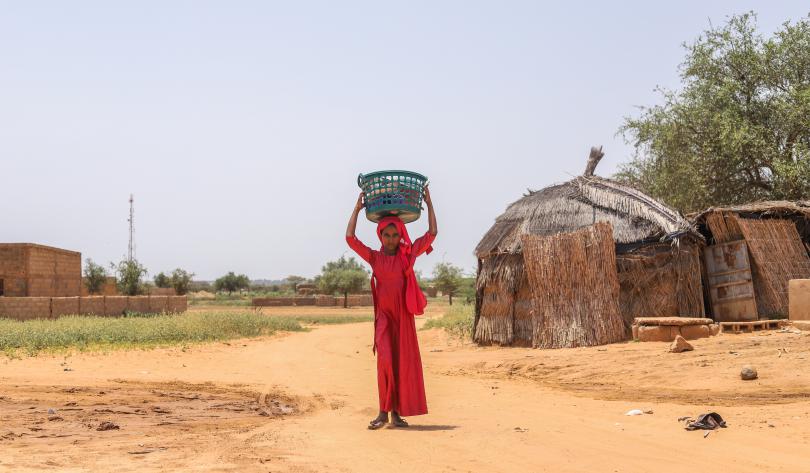
3. Violence Against Children [1]:
Falmata*, 15, Nigeria, “They dragged me out of my bed and demanded that I get into one of their vehicles. They did not beat us but they made us do house chores and forced us into marriage.”
Harouna, 17, Mali, “Children face several types of violence, including physical, psychological, and sexual violence. With the health crisis (covid-19), children's rights are being violated. Girls are abused and raped. Among the internally displaced, children are unprotected and left to their own devices. Because of poverty, some parents are forced to sell their children to support themselves. This is very common in our country.”
“That experience changed my life forever. After a year, I found out some of my friends who had been kidnapped had now fully joined the non-state armed groups. I still can’t be in class or a school compound for very long, it has left me very traumatized for years. It caused me to discontinue my education.” – Anonymous child from Burkina Faso.
“Not allowing children to have a regular and quality education is also a serious form of violence and deprivation against them and affects their well-being, growth and development. It is time to act to help children affected by the crises and practices that go with them. Inaction will sacrifice an entire generation," concluded Aboubacar from Mali.
The list of harmful practices above is non-exhaustive[2]. They all are likely to cause physical, psychological, economic, and social harm and/or violence as well as limitations on children’s capacity to participate fully in society or develop and reach their full potential. Harmful practices are imposed on children by family, community members, and society at large.
Children are the voices of change, here is what some of these children encourage other children to do, to help get involved in the effort to eliminate harmful practices for African children everywhere:
Share literature on Child Rights with your peers and your community. Get Informed!
Use technology to share your stories with your peers and with leaders.
Write a letter to decision makers asking for change!
Join the school government to sensitize your community on issues that matter most!
Embrace African tradition, tell the stories of those who need help to caution future generations about the negative impacts of harmful practices.
* names have been changed to protect the identity of children.
[1]. In addition to the above-mentioned initiatives, the AU adopted several other campaigns and initiatives to end violence against children. In 2019, the AU adopted the Ten-Year Action Plan on the Eradication of Child Labour, Forced Labour, Human Trafficking and Modern Slavery in Africa (2020-2030) to achieve the objective and targets of the AU Agenda 2063 regarding the elimination of all forms of child labour in the continent in line with target 8.7 of the UN Agenda 2030. The Regional Action Plan on Albinism in Africa (2017–2021) was also developed in response to human rights violations being committed against persons with albinism, including children.
[2]. A variety of harmful practices exist, including ‘FGM, child and forced marriage, virginity testing and related practices, extreme dietary restrictions, including during pregnancy (force-feeding, food taboos), binding, scarring, branding/ infliction of tribal marks, corporal punishment, stoning, violent initiation rites, widowhood practices, accusations of witchcraft, infanticide, incest and body modifications that are performed for beauty or marriageability of girls and women.
